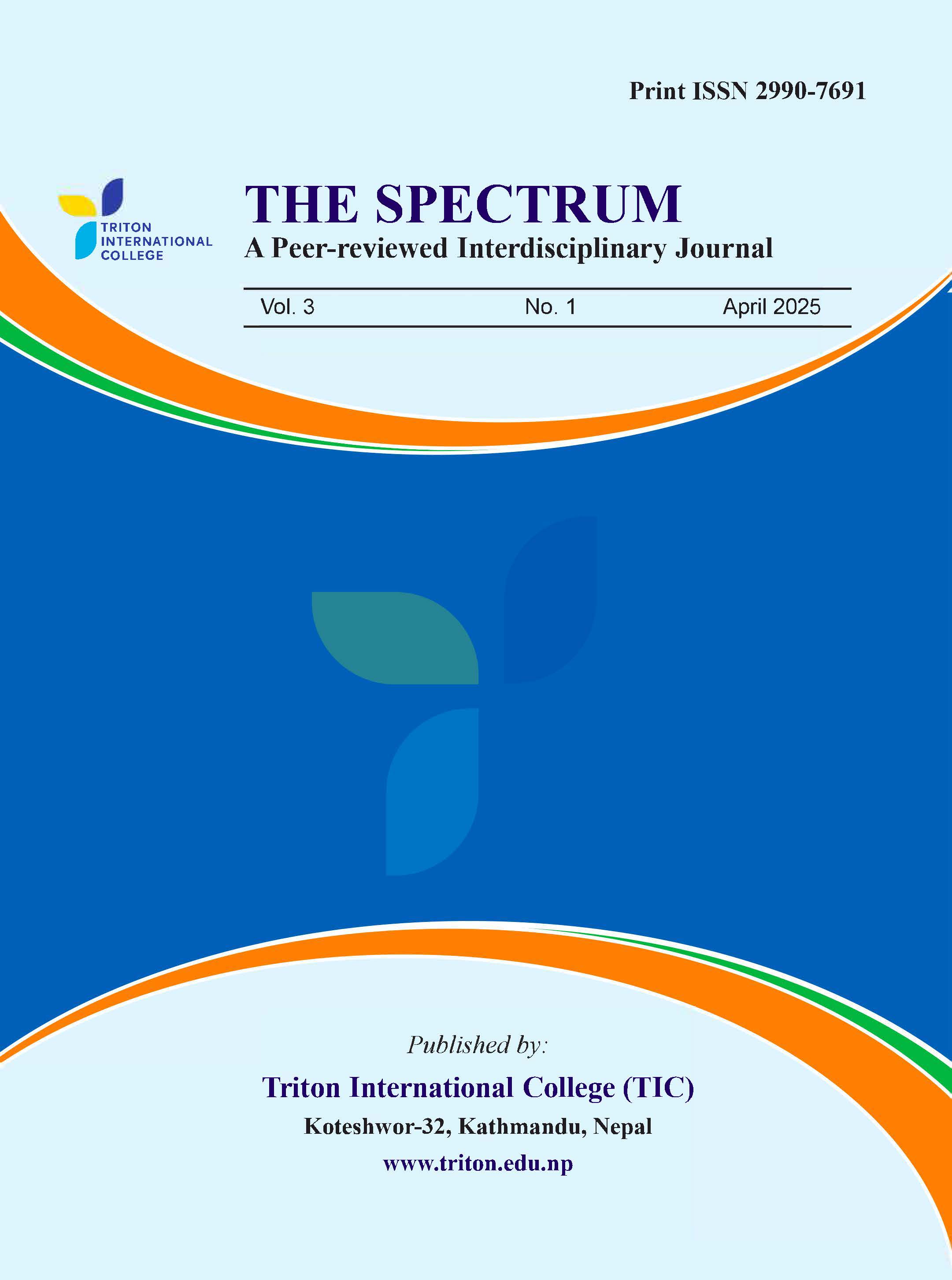Discourses on Disaster Scholarship: A Conceptual Review
DOI:
https://doi.org/10.3126/spectrum.v3i1.77367Keywords:
Catastrophe, Disaster, Culture, Myths, Eco-criticismAbstract
This article explores the dominant trends and debates surrounding the framing and conceptualization of disasters in scholarly discourse. While providing a global overview of various disasters, it focuses on how academic disciplines have defined and debated catastrophic events. The study examines how disasters are contested and the paradigms that shape this field. It follows a structured approach, beginning with a review of representative definitions of disaster, followed by an analysis of discourse on major international disasters, and concluding with an examination of prevalent paradigms. Additionally, it considers how disasters are mediated through myths and literary works. As a qualitative conceptual attempt, it draws insights, discussions, analyses, and inferences from secondary sources, including books, journals, and other written materials. The findings indicate while diverse disciplinary discussions have enriched the understanding of disaster scholarship. It concludes that, since disasters are interconnected events and processes rather than isolated incidents, they require a more holistic and comprehensive understanding.
Downloads
Downloads
Published
How to Cite
Issue
Section
License

This work is licensed under a Creative Commons Attribution-NonCommercial 4.0 International License.
This license allows reusers to distribute, remix, adapt, and build upon the material in any medium or format for non-commercial purposes only, and only so long as attribution is given to the creator.




